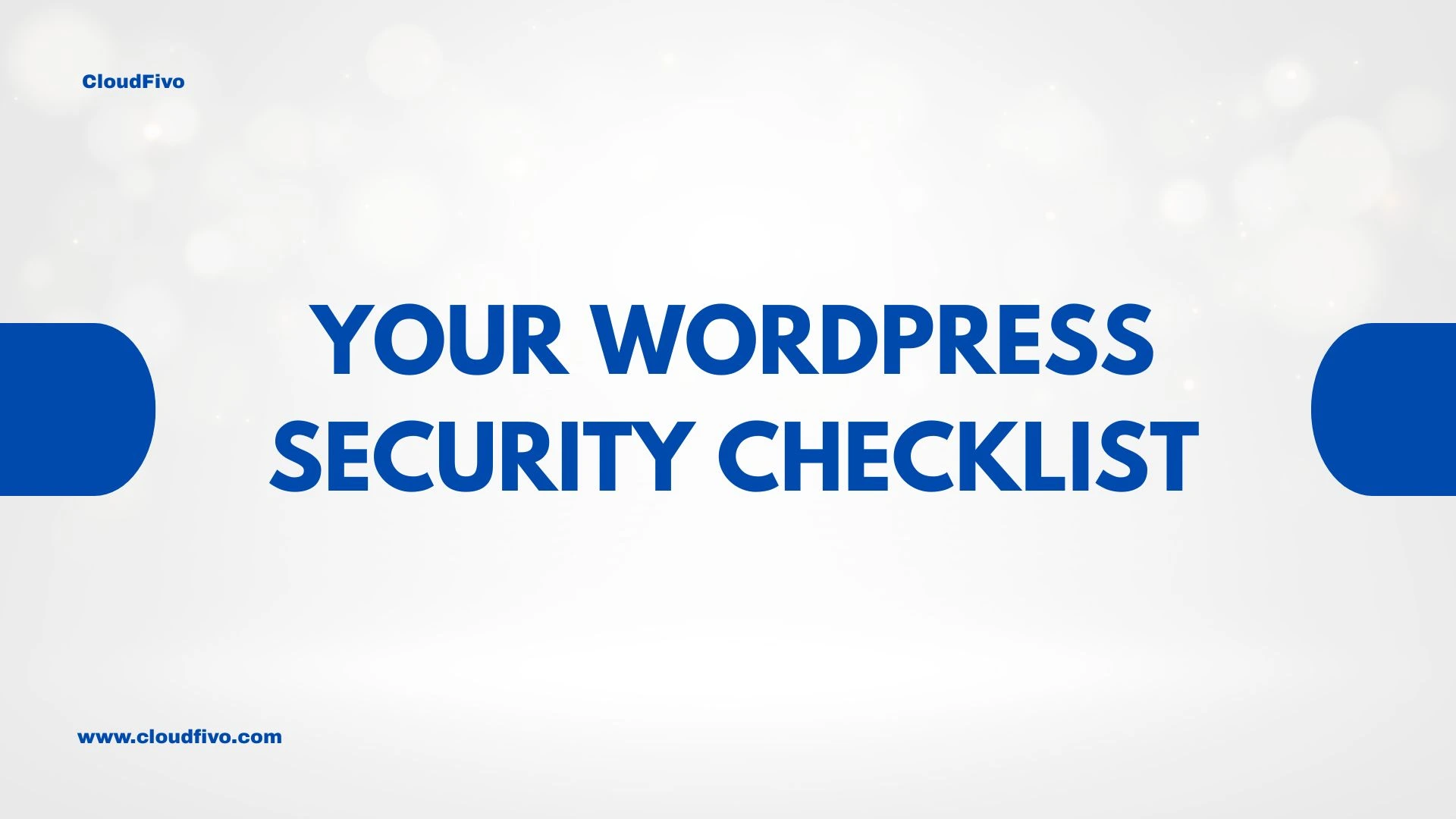
10 Essential Security Tips to Protect Your WordPress Website from Hackers
In the world of website ownership, there’s one undeniable truth: the best time to deal with a website hack is before it ever happens.
In our last article, we walked through the emergency steps to take if your website was hacked. It’s a stressful, reactive process. This guide is the proactive cure. Think of it as the digital equivalent of locking your doors and windows at night. These are simple, common-sense habits that can protect your hard work from 99% of common online threats.
If you want to secure your WordPress website, this is your essential checklist.
1. Use Strong, Unique Passwords
This is rule number one for a reason. The most common way hackers gain access is by guessing simple, common passwords. If you are using “admin” as your username and “password123” as your password, you are leaving the front door wide open.
A strong password should be:
- Long: At least 12 characters.
- Complex: A mix of uppercase letters, lowercase letters, numbers, and symbols.
- Unique: Never reuse the same password on multiple websites.
Use a password manager like Bitwarden or LastPass to generate and store complex passwords safely.
2. Keep Everything Updated (This is Non-Negotiable)
If you only follow one tip on this list, make it this one. Outdated software is the single biggest vulnerability for WordPress sites. Every update for WordPress core, your plugins, and your themes often includes critical security patches. By not updating, you are leaving a known backdoor open for hackers to exploit.
Make it a weekly habit to log in to your dashboard and check for updates.
3. Choose a Secure Hosting Provider
Website security doesn’t start with your WordPress login page; it starts at the server level. A high-quality hosting provider is your first line of defense. They implement server-wide security measures that you can’t manage on your own.
Look for a host (like CloudFivo) that offers:
- A Web Application Firewall (WAF) to block malicious traffic before it even reaches your site.
- Regular malware scanning at the server level.
- The latest versions of software like PHP and MySQL.
4. Install a Reputable Security Plugin
Think of a security plugin as your website’s personal 24/7 security guard. These tools monitor your site for suspicious activity, scan for malware, and block hacking attempts in real-time.
Two of the most popular and effective options are Wordfence Security and Sucuri Security. Install one of them, run a scan, and configure the basic settings like the firewall.
5. Limit Login Attempts
By default, WordPress lets a user try to log in an unlimited number of times. Hackers exploit this with “brute-force attacks,” where a bot tries thousands of password combinations per minute.
You can stop this easily. A security plugin like Wordfence has a built-in feature to limit login attempts. You can set it to lock out a user for an hour after 5 failed login attempts, which makes brute-force attacks completely ineffective.
6. Use Smart User Roles (The Principle of Least Privilege)
If you have multiple people writing for your blog, do not make them all “Administrators.” An Administrator has full control over the entire website. Follow the “principle of least privilege”: give each user only the permissions they absolutely need to do their job.
- If someone only writes articles, make them a “Contributor” or “Author.”
- If someone helps manage content, make them an “Editor.”
- Reserve the “Administrator” role for only those who need to manage plugins, themes, and settings.
7. Enable Two-Factor Authentication (2FA)
This is one of the most powerful ways to secure your login page. With 2FA, even if a hacker steals your password, they still can’t log in. After entering the password, the user must also provide a second piece of information—usually a temporary code from an app on their phone (like Google Authenticator).
Most security plugins make it easy to enable 2FA for your admin accounts.
8. Have a Reliable, Automated Backup System
Sometimes, despite your best efforts, things can still go wrong. A reliable backup is your ultimate safety net. It’s the “undo” button for a catastrophe.
Ensure you have a system that automatically backs up your entire website (files and database) regularly. Your hosting provider should offer a backup solution, but it’s also wise to have your own using a plugin like UpdraftPlus.
9. Use an SSL Certificate (HTTPS)
An SSL certificate encrypts the data transferred between your website and your visitors. This is what puts the little padlock icon in the address bar and changes your site from http:// to https://.
It’s essential for security, visitor trust, and is also a confirmed Google ranking factor. Most quality hosts, including CloudFivo, offer free SSL certificates that are easy to install.
10. Delete What You Don’t Use
Every plugin and theme on your website is a potential entry point for a hacker. It’s common for users to try out a dozen plugins and then simply deactivate the ones they don’t like, leaving them sitting on the server.
This is a security risk. If a vulnerability is found in one of those deactivated plugins, your site is still at risk. Make it a rule: if you are not using a plugin or theme, delete it completely.
Conclusion: Security is a Habit, Not a Task
Securing your WordPress website isn’t about a single, one-time fix. It’s about building a series of small, consistent habits.
The good news is that you don’t have to be a security expert. By following the simple steps on this checklist, you will make your website a much harder target and protect it from the vast majority of automated attacks. You’ve already made your site safer than most of the websites on the internet.
